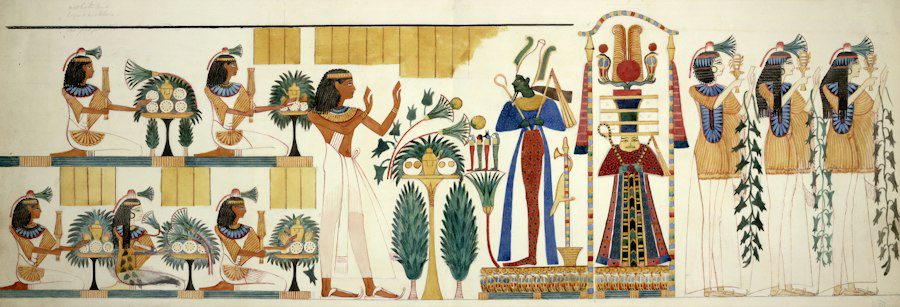The Aramaic language originated in the ancient kingdom of Aram, which was located in modern-day Syria and parts of Iraq and Turkey. It is believed to have evolved from an earlier Semitic language known as Akkadian. The earliest evidence of Old Aramaic can be found in inscriptions dating back to the 10th century BCE.
Old Aramaic gained prominence during the Neo-Assyrian Empire (9th-7th centuries BCE) when it became the administrative language of the empire. It continued to be widely used during the Neo-Babylonian Empire (6th-4th centuries BCE) and the Achaemenid Empire (6th-4th centuries BCE), which further spread its influence across a vast region.
Features and Characteristics of Old Aramaic
The phonology and grammar of Old Aramaic are similar to other Semitic languages. It is characterized by a consonantal root system, where words are formed by adding vowels and affixes to a core set of consonants. The language also has a complex system of verb conjugation and noun declension.
The writing system used for Old Aramaic is a variant of the Phoenician alphabet, known as the Aramaic alphabet. It consists of 22 consonantal letters and does not include any vowel symbols. Vowels were typically indicated using diacritical marks or were left unmarked, relying on the reader’s knowledge of the language to determine the correct pronunciation.
The vocabulary and syntax of Old Aramaic are influenced by its contact with other languages in the region. It borrowed words from Akkadian, Persian, and Greek, among others. The syntax follows a subject-object-verb word order, similar to other Semitic languages.
Translation of Old Aramaic Texts
Translating Old Aramaic texts poses several challenges due to the scarcity of resources and expertise in the field. The language is no longer spoken, and there are limited sources available for studying it. Additionally, the scripts used for writing Old Aramaic can be difficult to decipher, especially when they are poorly preserved or damaged.
Translators of Old Aramaic texts employ various techniques to overcome these challenges. They rely on comparative linguistics and knowledge of related Semitic languages to decipher unfamiliar words and phrases. They also use contextual clues from the surrounding text to understand the meaning of ambiguous or unclear passages.
Examples of Old Aramaic texts that have been successfully translated include the Elephantine papyri, which are legal documents from the 5th century BCE found in Egypt. These texts provide valuable insights into the lives of Jewish communities living in Elephantine during that time.
Importance of Old Aramaic in Ancient Times
Old Aramaic played a significant role in ancient empires as the language of administration and communication. It was used in official documents, royal inscriptions, and diplomatic correspondence. Its widespread use as a lingua franca facilitated trade and commerce, as well as cultural exchange, between different regions.
The language also had a prominent role in religious texts. Portions of the Hebrew Bible, such as the books of Daniel and Ezra, were written in Aramaic. The Targums, which are Aramaic translations and interpretations of the Hebrew Bible, were widely used by Jewish communities for religious instruction.
Old Aramaic was also important in trade and commerce. Its use as a lingua franca allowed merchants from different regions to communicate and conduct business transactions. The Aramaic script was used on coins and commercial documents, further emphasizing its significance in economic activities.
Comparison of Old Aramaic with Other Ancient Languages
Old Aramaic shares similarities with other ancient Semitic languages, such as Hebrew and Arabic. They all belong to the same language family and share common linguistic features, such as the consonantal root system and verb conjugation patterns.
However, there are also notable differences between Old Aramaic and other ancient languages. For example, Old Aramaic has a more extensive vocabulary influenced by its contact with other languages in the region. It also has distinct grammatical features, such as the use of definite and indefinite articles.
Old Aramaic had a significant influence on other languages, particularly Hebrew and Arabic. Many words and phrases from Old Aramaic were borrowed into these languages, enriching their vocabulary. The influence of Old Aramaic can still be seen in modern Hebrew and Arabic today.
Challenges in Translation of Old Aramaic Texts

Translating Old Aramaic texts presents several challenges due to the limited resources and expertise available in the field. There are relatively few scholars who specialize in Old Aramaic translation, making it difficult to find accurate and reliable translations.
Deciphering Old Aramaic scripts can also be challenging, especially when the texts are poorly preserved or damaged. The scripts used for writing Old Aramaic, such as the Palmyrene script and the Estrangelo script, require specialized knowledge and expertise to interpret.
Accuracy is of utmost importance in Old Aramaic translation, as even small errors or misinterpretations can significantly impact the meaning of the text. Translators must have a deep understanding of the language and its cultural context to ensure accurate and faithful translations.
Role of 24x7offshoring in Old Aramaic Translation
24x7offshoring is a leading provider of translation services, including Old Aramaic translation. With a team of expert translators who specialize in ancient languages, including Old Aramaic, they offer high-quality and accurate translations of Old Aramaic texts.
The translators at 24x7offshoring have extensive knowledge and expertise in Old Aramaic language and culture. They are familiar with the nuances and complexities of the language, allowing them to provide accurate and faithful translations.
Outsourcing Old Aramaic translation services to 24x7offshoring offers several benefits. Firstly, it provides cost-effective solutions, as clients only pay for the services they need, without the overhead costs of hiring and maintaining an in-house translation team. Secondly, it ensures access to expert translators who specialize in Old Aramaic, guaranteeing high-quality translations. Lastly, 24x7offshoring is known for its timely delivery of translations, ensuring that clients receive their translated texts within the agreed-upon timeframe.
Advantages of Outsourcing Old Aramaic Translation Services
Outsourcing Old Aramaic translation services to 24x7offshoring offers several advantages. Firstly, it provides cost-effective solutions for clients who require Old Aramaic translations. By outsourcing to a specialized translation service provider, clients can save on the costs of hiring and maintaining an in-house translation team.
Secondly, outsourcing ensures access to expert translators who have in-depth knowledge and expertise in Old Aramaic. These translators are familiar with the nuances and complexities of the language, allowing them to provide accurate and faithful translations.
Lastly, 24x7offshoring is known for its timely delivery of translations. Clients can rely on their efficient workflow and project management systems to receive their translated texts within the agreed-upon timeframe.
Future Prospects and Scope of Old Aramaic Language Translation
The study and translation of Old Aramaic have significant future prospects and scope. In academic research, Old Aramaic plays a crucial role in understanding the history and culture of the ancient Near East. Scholars continue to uncover new texts and inscriptions that shed light on various aspects of ancient societies.
In business and commerce, there is potential for Old Aramaic translation services. As companies expand their operations into the Middle East and engage with local communities, having access to accurate translations of Old Aramaic texts can facilitate communication and understanding.
The future prospects for Old Aramaic translation services are promising, as there is a growing interest in ancient languages and cultures. With advancements in technology and increased access to resources, the field of Old Aramaic translation is likely to expand, providing valuable insights into the ancient world.
If you’re interested in the Old Aramaic language, you might also find this article on natural language processing (NLP) services helpful. NLP is a branch of artificial intelligence (AI) that focuses on the interaction between computers and human language. It has applications in various fields, including translation and language understanding. Check out this article to learn more about how NLP can enhance our understanding of ancient languages like Old Aramaic.
FAQs
What is Old Aramaic?
Old Aramaic is an ancient Semitic language that was spoken in the Near East from around the 10th century BCE until the 6th century BCE. It was the language of the Aramean people and was used as a lingua franca in the region.
When was Old Aramaic spoken?
Old Aramaic was spoken from around the 10th century BCE until the 6th century BCE.
Where was Old Aramaic spoken?
Old Aramaic was spoken in the Near East, including parts of modern-day Syria, Iraq, Iran, and Turkey.
What is the significance of Old Aramaic?
Old Aramaic was an important language in the ancient Near East and was used as a lingua franca in the region. It was also the language of the Aramean people, who played a significant role in the history of the region.
What are some examples of Old Aramaic texts?
Some examples of Old Aramaic texts include the Tel Dan Stele, the Siloam Inscription, and the Zakkur Inscription.
Is Old Aramaic still spoken today?
No, Old Aramaic is not spoken today. However, its descendant languages, such as Modern Aramaic, are still spoken by some communities in the Near East.
